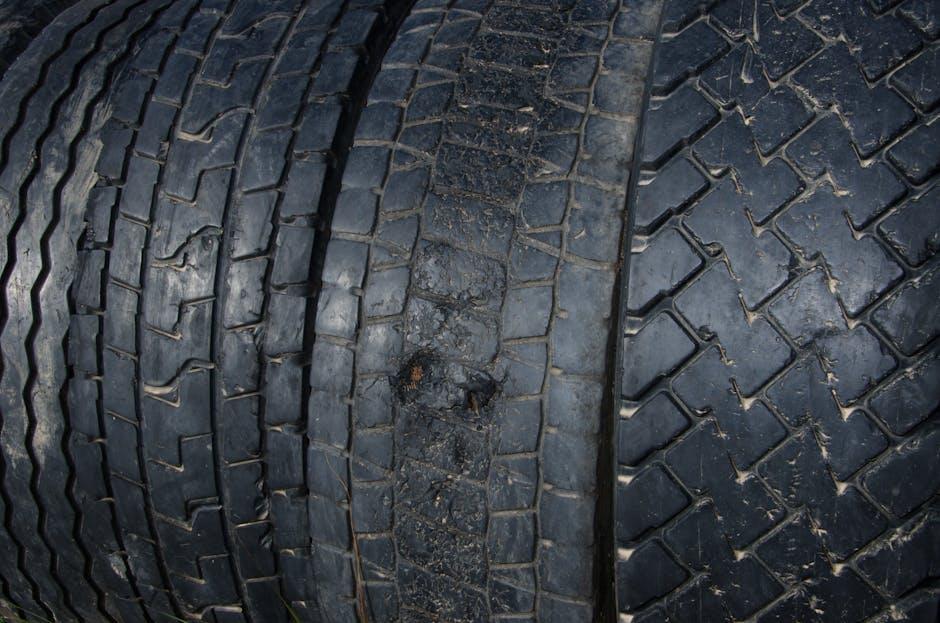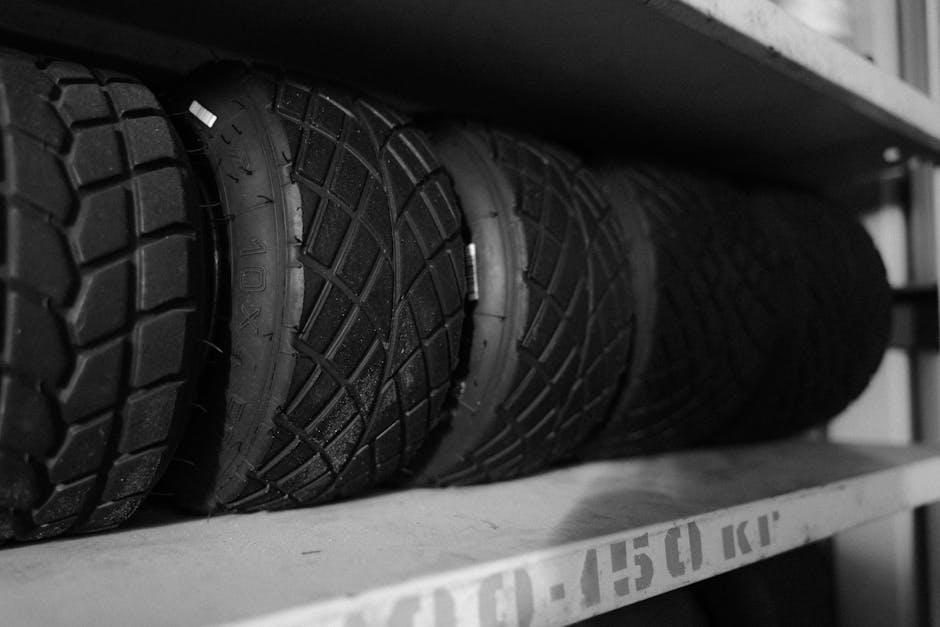Choosing the right tires might seem like a straightforward task, but beneath the surface lies a world of variety, technology, and crucial decisions that impact safety, performance, and comfort. Whether you’re navigating city streets, conquering rugged trails, or seeking a smooth highway ride, the perfect set of tires acts as your vehicle’s vital connection to the road. This guide will help you cut through the noise, understand key factors, and make an informed choice tailored to your driving needs—because the right tires are more than just rubber; they’re the foundation of your journey.
Table of Contents
- Understanding Tire Types and Their Best Uses
- Decoding Tire Sizes for Perfect Fit and Performance
- Tread Patterns Explained: Which One Suits Your Driving Style
- Seasonal Tires Versus All-Season: Making the Right Choice
- Key Factors to Consider for Tire Longevity and Safety
- Top Brands and Budget-Friendly Options Worth Considering
- Q&A
- Concluding Remarks

Understanding Tire Types and Their Best Uses
When selecting tires, understanding the specific characteristics of each type can dramatically improve your vehicle’s performance and safety. All-season tires offer versatility, designed to handle a range of weather conditions including light snow, making them ideal for moderate climates. Meanwhile, summer tires excel in warm weather with enhanced grip and responsiveness on dry and wet roads but falter in cold temperatures. On the other hand, winter tires feature deeper treads and softer rubber compounds, providing superior traction on snow and ice, perfect for harsh winter environments.
To make a well-informed decision, consider the primary conditions you drive in and your vehicle type. The table below outlines key tire types and their ideal applications, helping you quickly match your driving needs with the right tire technology.
| Tire Type | Optimal Conditions | Key Benefits |
|---|---|---|
| All-Season | Dry, wet, light snow | Versatile, cost-effective, durable |
| Summer | Warm, dry, wet | Enhanced grip, responsive handling |
| Winter | Snow, ice, freezing temperatures | Superior traction, safer stops |
| Performance | Dry, wet, high speeds | Improved cornering, stability |

Decoding Tire Sizes for Perfect Fit and Performance
Every tire carries a secret language stamped on its sidewall, a code that unravels its exact size and specifications. This code isn’t just a random series of numbers and letters; it’s a carefully designed system that helps you find a tire that perfectly matches your vehicle and driving style. For example, a tire marked 205/55R16 breaks down as follows: 205 represents the tire’s width in millimeters, 55 is the aspect ratio or height of the sidewall as a percentage of the width, R denotes radial construction, and 16 is the wheel diameter in inches. Understanding these numbers is crucial because they influence the ride quality, handling, and fuel efficiency of your vehicle.
Beyond just size, tires also feature load and speed ratings to ensure safety and performance. It’s vital to consult your vehicle’s manual or a tire professional when decoding these codes to select a tire that fits perfectly. Here’s a quick guide to some common codes:
- Load Index: Indicates the maximum weight a tire can support.
- Speed Rating: Letters from L to Y indicate the maximum vehicle speed the tire can safely maintain.
- Construction Type: Usually R for radial, the most common and durable style.
| Code | Meaning | Example |
|---|---|---|
| 225 | Tire Width (mm) | 225 mm |
| 50 | Aspect Ratio (%) | Sidewall height is 50% of tire width |
| R | Radial Construction | Radial tire |
| 17 | Wheel Diameter (inches) | Fits 17″ wheels |
| 94 | Load Index | Maximum load 670 kg |
| H | Speed Rating | Max speed 210 km/h |

Tread Patterns Explained: Which One Suits Your Driving Style
Understanding the unique designs behind tire tread patterns can dramatically transform your driving experience. Each pattern is engineered to perform optimally under specific conditions and driving behaviors. For instance, symmetrical treads offer a smooth, quiet ride and even wear—perfect for everyday commuting and highway cruising. Meanwhile, asymmetrical patterns balance dry grip with wet traction, appealing to drivers who want versatility without compromising performance. For those who brave snowy or muddy terrains regularly, directional treads provide superior water and slush evacuation, boosting safety and control in challenging weather.
Choosing the right pattern also depends on how you drive. Aggressive drivers who prioritize cornering and acceleration might prefer tread designs with larger blocks and stiffer sidewalls, enhancing grip and responsiveness. Conversely, if fuel efficiency and longevity are your focus, patterns optimized for reduced rolling resistance come into play. Here’s a quick glance at common tread types and their ideal use:
| Tread Pattern | Best For | Driving Style |
|---|---|---|
| Symmetrical | Daily commuting, highway | Balanced, steady |
| Asymmetrical | City driving, wet & dry roads | Versatile, performance-oriented |
| Directional | Rain, snow, & slush | Aggressive, precise control |
| Off-Road | Mud, dirt, and rough terrain | Adventurous, rugged |

Seasonal Tires Versus All-Season: Making the Right Choice
Choosing between seasonal tires and all-season options boils down to understanding the driving conditions you face most often. Seasonal tires are engineered with specialized rubber compounds that harden or soften depending on the temperature, providing superior grip and performance tailored for summer or winter. For instance, winter tires feature deeper treads and unique siping patterns to enhance traction on snow and ice, while summer tires offer maximum contact and responsiveness on dry or wet roads. However, their optimal performance is limited to their intended season, meaning using winter tires in summer can lead to faster wear and reduced handling precision.
On the other hand, all-season tires seek to balance performance across a variety of conditions, making them a practical choice for drivers in regions with milder climates. They incorporate tread patterns and rubber compounds that enable acceptable performance in rain, light snow, and moderate temperatures. While they don’t match the specialized grip of seasonal tires in extreme weather, they offer convenience and cost savings by reducing tire changes throughout the year. Consider this simplified comparison:
| Feature | Seasonal Tires | All-Season Tires |
|---|---|---|
| Optimal Conditions | Extreme summer or winter weather | Moderate climates, varied conditions |
| Performance | Superior grip, enhanced safety | Balanced but less specialized |
| Longevity | Season-limited wear | Year-round durability |
| Convenience | Requires seasonal changeover | No seasonal swaps needed |

Key Factors to Consider for Tire Longevity and Safety
When selecting tires, it’s essential to balance durability with safety to maximize performance on every journey. The quality of rubber compounds and tread design significantly impact how long your tires last and how well they grip the road. Choosing tires with advanced silica-infused compounds can reduce rolling resistance and wear, while innovative tread patterns ensure effective water evacuation to prevent hydroplaning. Additionally, pay attention to the tire’s load index and speed rating to guarantee compatibility with your vehicle’s specifications and driving style.
Environmental factors and maintenance routines also heavily influence tire longevity. Consistent tire rotation, proper inflation, and regular alignment checks prevent uneven wear and prolong tire life. Seasonal conditions matter too—opt for all-season tires if you face varied weather, or specialized winter tires in snowy climates for enhanced traction. Consider the following essentials for optimal tire care:
- Regular Pressure Checks: Correct pressure prevents excessive wear and improves fuel efficiency.
- Periodic Rotation: Evenly distributes tread wear across all tires.
- Alignment Inspections: Avoids uneven tread patterns and handling issues.
- Storage Conditions: Store tires in cool, dry places away from direct sunlight.
| Factor | Impact on Longevity | Safety Benefit |
|---|---|---|
| Rubber Compound | Enhances wear resistance | Improves road grip |
| Tread Design | Promotes even wear | Reduces hydroplaning risk |
| Proper Inflation | Extends tread life | Maintains vehicle control |

Top Brands and Budget-Friendly Options Worth Considering
When investing in tires, prioritizing brands that have earned a reputation for reliability and innovation can make all the difference in your driving experience. Brands like Michelin, Bridgestone, and Continental consistently deliver tires that excel in performance, longevity, and safety. Their products undergo rigorous testing to ensure optimum grip in various weather conditions and boast cutting-edge technology to reduce road noise and improve fuel efficiency. Choosing well-established names not only offers peace of mind but often includes comprehensive warranties, providing extra value beyond the initial purchase.
However, quality doesn’t always require a hefty price tag. For drivers seeking budget-friendly alternatives without sacrificing essential safety standards, brands such as Hankook, Cooper, and Federal present excellent options. These manufacturers strike a balance between affordability and dependable performance, making them ideal for everyday commuting. Below is a quick comparison to help you navigate your choice:
| Brand | Price Range | Warranty | Best For |
|---|---|---|---|
| Michelin | $$$ | 60,000 miles | Performance & Durability |
| Bridgestone | $$$ | 50,000 miles | All-Season Versatility |
| Hankook | $ | 40,000 miles | Economical Daily Use |
| Cooper | $ | 45,000 miles | Reliable Traction |
- Top-tier brands: Ideal if you prioritize advanced features and unmatched durability.
- Budget picks: Great for reliable service without compromising safety.
- Consider warranties: Longer coverage can save money in the long run.
Q&A
Q&A: How to Choose the Right Tires
Q: Why is choosing the right tires so important?
A: Tires are your vehicle’s only contact with the road, directly influencing safety, fuel efficiency, and driving comfort. The right tires ensure optimal performance, grip, and durability, tailored to your specific driving conditions.
Q: What are the main types of tires available?
A: Generally, tires fall into three categories: all-season, summer, and winter tires. All-season tires offer a balanced performance year-round; summer tires excel in warm, dry conditions with enhanced grip; winter tires provide superior traction in snow, ice, and cold temperatures.
Q: How do I determine the right tire size for my vehicle?
A: Check your vehicle’s owner manual or the placard inside the driver’s door for recommended tire sizes. Tire size is a combination of width, profile, and diameter, typically shown as something like “205/55R16.” Choosing the correct size is crucial for safe handling and speedometer accuracy.
Q: What role does tread pattern play in tire selection?
A: The tread pattern affects how a tire handles different road conditions. Symmetrical patterns offer smooth ride and long wear, asymmetrical patterns improve cornering and traction, and directional patterns excel at channeling water to prevent hydroplaning.
Q: Should I consider my driving habits when choosing tires?
A: Absolutely. If you drive mostly on highways, you might prioritize tires geared for comfort and longevity. For city driving with frequent stops, tires with good grip and responsiveness matter. Off-road enthusiasts need specialized tires designed for rugged terrain.
Q: How does tire durability factor into the decision?
A: Tires come with treadwear ratings indicating expected lifespan. Harder compounds last longer but may sacrifice grip, while softer compounds offer better traction but wear out faster. Balancing durability and performance is key based on your priorities.
Q: Are there any environmental considerations in tire choice?
A: Yes. Eco-friendly tires reduce rolling resistance, improving fuel efficiency and lowering carbon emissions. Some tires use sustainable materials and advanced designs to minimize environmental impact without compromising safety.
Q: How often should I replace my tires?
A: Typically, tires should be replaced every 6 years due to rubber aging, even if tread appears sufficient. Regularly check tread depth and look for signs of damage or uneven wear as indicators it’s time for new tires.
Q: Can I mix different tire brands or types on my vehicle?
A: Mixing tires is not usually recommended. Uniform tires across all wheels ensure balanced handling and consistent performance. If mixing is unavoidable, it’s best to have the same type and size on each axle.
Q: What final tips can help me make the best choice?
A: Research and compare tires based on your vehicle, climate, and driving style. Don’t hesitate to consult professionals and read user reviews. Remember, the right tires are an investment in your safety and driving pleasure.
Concluding Remarks
Choosing the right tires is more than just a routine maintenance task—it’s a crucial decision that impacts your safety, performance, and overall driving experience. By understanding your vehicle’s needs, driving habits, and the conditions you face on the road, you can make an informed choice that keeps you balanced between comfort and control. Remember, the perfect set of tires isn’t just about getting from point A to B—it’s about doing so with confidence and peace of mind, mile after mile. So take the time, weigh your options, and let your tires pave the way to smoother journeys ahead.

